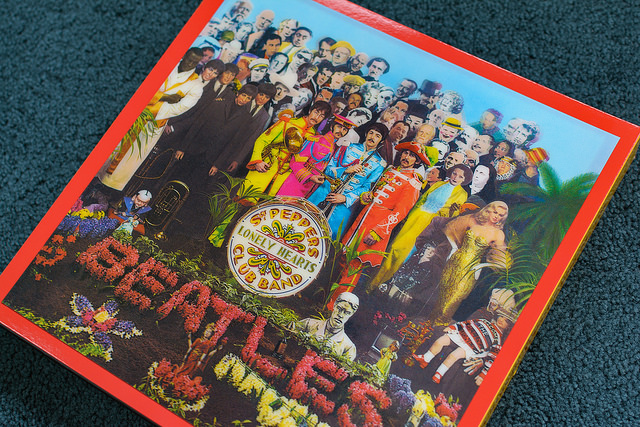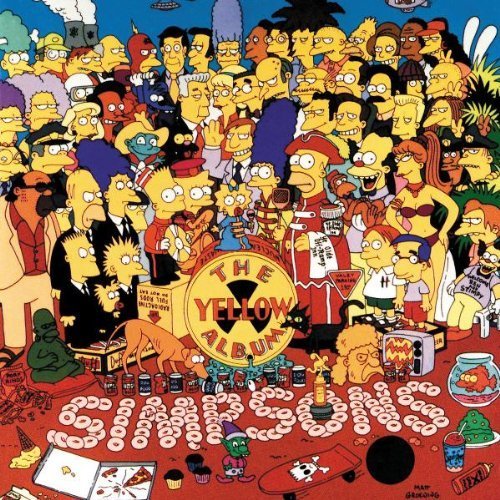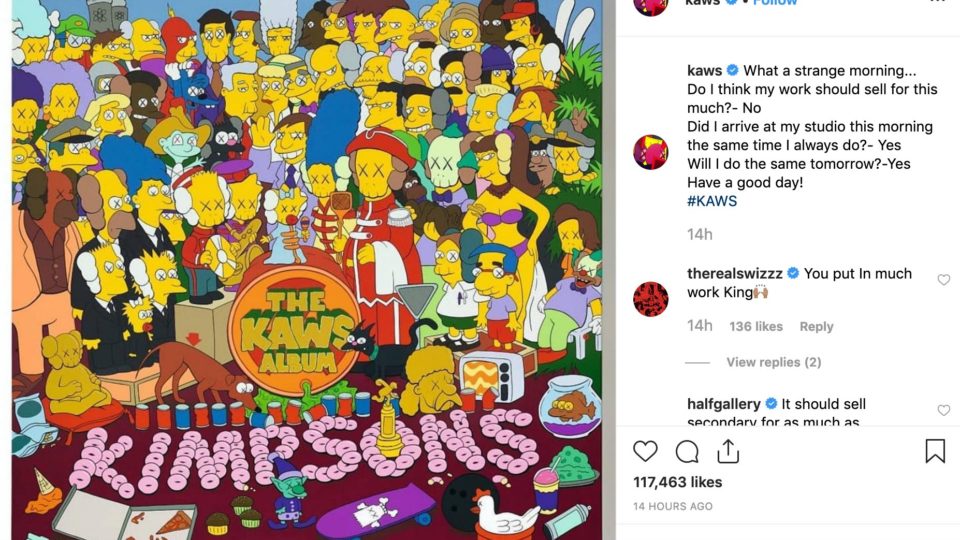To paraphrase a line from Hunter S. Thompson, the contemporary art world is decadent and depraved.
A painting by the New York-based artist KAWS — of giant-floating-harbor-corpse fame — sold at a Sotheby’s auction in Hong Kong yesterday evening for just under HK$116 million (about US$14.8 million), nearly 15 times the auction house’s estimate and more than five times the artist’s previous record sale.
The 40×40-inch, acrylic on canvas painting was snapped up by an unidentified buyer at the auction, which featured works from the personal collection of Japanese fashion designer, musician, entrepreneur, and apparent archetypal cool kid Nigo.
The piece in question, titled “THE KAWS ALBUM,” was one of several works by the artist — born Brian Donnelly — to go under the hammer yesterday.

An apparent homage to the cover of the Beatles’ iconic album Sgt. Pepper’s Lonely Hearts Club Band, the painting is instead populated with dozens of characters of the equally iconic TV show The Simpsons.
This may have been cute had KAWS come up with the conceit himself, but the artwork is actually an effective figure-for-figure repaint of the cover of the 1998 novelty Simpsons record The Yellow Album. KAWS’s contribution to the work appears to be limited to a few signature flourishes, including X-ing out the characters’ eyes, adding a smattering of stylized crossbones to their heads, and recasting a Buddha-like statue of Homer visible in the original as his own character, “Companion.”
As an artist whose work is thematically ambiguous at best, KAWS raises several questions as to the significance of the work, and the nature of the contemporary art world itself.

If The Simpsons’s appropriation of an image of an era-defining pop cultural force was itself a wry commentary on shifting pop cultural poles, what is KAWS’s appropriation of that appropriation?
Is it, in its own way, an announcement of a new pop cultural order? Or is it a lazy, cynical effort to marry one commercial juggernaut, i.e. The Simpsons, to another, vastly more elitist commercial juggernaut, i.e. KAWS’s own ever-expanding, endlessly merchandized body of work?
Or rather, is the very laziness of the work its chief virtue? Could its utter lack of originality, coupled with its immense price tag, be a Banksy-like prank played on an increasingly out-of-touch art world, which has itself become overly commercialized? If the work is indeed a prank, does that make the person who shelled out a small fortune for it a sly co-conspirator, or the joke’s ultimate butt?
Observers yesterday also seemed perplexed.
“This KAWS thing is April Fool’s right?” one Twitter user quite understandably wondered.
This KAWS thing is April Fool's right?
— Dushko Petrovich Córdova (@DushkoP) April 1, 2019
“It’s not a joke,” another said, perhaps as much in an effort to convince himself as anyone else.
https://twitter.com/Aleph_/status/1112918242803306496
But perhaps it was KAWS himself who actually said it best.
“What a strange morning,” the artist said in an Instagram post. “Do I think my work should sell for this much?-No.”
https://www.instagram.com/p/BvuMp8Ih2T4/?utm_source=ig_web_copy_link




